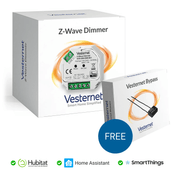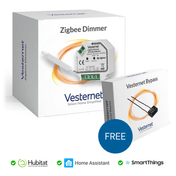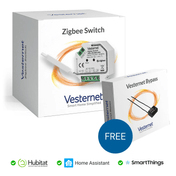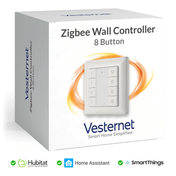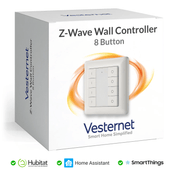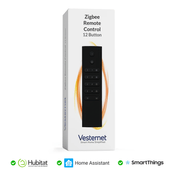Modern smart home owners increasingly face connectivity challenges when travelling or working remotely, particularly when trying to manage wireless devices, cameras, and automation systems from different locations with varying network conditions. Whether you're managing a property remotely or need reliable connectivity whilst away from your primary broadband connection, maintaining seamless smart home control requires strategic mobile connectivity planning.
Mobile WiFi solutions and portable hotspot technologies offer powerful ways to maintain seamless connectivity for smart home devices, whether you're using range extenders, managing wireless cameras, or controlling automation systems whilst on the go. From creating a wifi hotspot for pc management to utilising wifi hotspot iphone capabilities, these portable network solutions ensure your smart home ecosystem remains accessible and functional regardless of location.
This comprehensive guide explores practical mobile connectivity strategies, from setting up effective hotspot networks to optimising wireless device management across different protocols and ensuring reliable remote access to your smart home ecosystem. You'll discover how to maintain control over your automation systems, security cameras, and wireless switches through strategic mobile network implementation.
Understanding Mobile WiFi and Smart Home Connectivity Fundamentals
Mobile WiFi technology creates wireless internet access points using cellular data connections, enabling smart home devices to maintain network connectivity even when traditional broadband services aren't available. This approach proves particularly valuable for temporary installations, remote properties, or situations requiring backup connectivity for critical smart home functions.
Core mobile connectivity components include:
- Cellular data-to-WiFi conversion through mobile hotspot devices
- Wireless protocol compatibility for Z-Wave, Zigbee, and WiFi-based devices
- Network bridging capabilities for maintaining mesh network functionality
- Bandwidth management for optimising device performance across limited data connections

Smart home protocols like Z-Wave and Zigbee create separate mesh networks that don't directly consume internet bandwidth, but their hubs and controllers require reliable WiFi connectivity for remote access and cloud-based features. Understanding this relationship helps optimise mobile connectivity strategies for different device types and automation requirements.
Setting Up Mobile Hotspots for Smart Home Device Access
Creating reliable mobile hotspots requires understanding the capabilities and limitations of different devices and platforms. Modern smartphones, dedicated mobile routers, and computer-based solutions each offer distinct advantages for smart home connectivity, with specific configuration requirements for optimal performance.
Smartphone hotspot setup process:
- Enable mobile data and verify sufficient data allowance for smart home usage
- Configure wifi hotspot iphone settings through Settings > Personal Hotspot
- Set strong WPA3 encryption with memorable network credentials
- Monitor connected devices and data consumption through carrier apps
For more robust solutions, creating a hotspot for pc through Windows 10/11 mobile hotspot functionality or using dedicated mobile router hardware provides enhanced connection stability and device capacity. These solutions typically offer better antenna performance, longer battery life, and more sophisticated network management features than smartphone-based alternatives.
Optimising Wireless Signal Coverage and Range Extension
Mobile WiFi networks often provide limited coverage compared to traditional home broadband installations, requiring strategic placement and range extension techniques to ensure reliable connectivity across your smart home ecosystem. Portable range extenders and wireless signal boosters can significantly improve mobile hotspot effectiveness.
Range extension strategies for mobile networks:
- Position mobile hotspot devices centrally within the coverage area needed
- Use portable WiFi range extenders to amplify mobile hotspot signals
- Implement mesh network extenders compatible with temporary network configurations
- Consider external antenna attachments for dedicated mobile router devices

Smart plugs with built-in signal boosting capabilities can enhance mobile connectivity whilst providing additional automation functionality. These devices create wireless network extension points that improve coverage for cameras, sensors, and controllers whilst maintaining their primary smart plug functions for lighting and appliance control.
Managing Smart Cameras and Security Systems on Mobile Networks
Security cameras and surveillance systems present unique challenges for mobile connectivity due to their high bandwidth requirements and continuous operation needs. Successful camera management on mobile networks requires careful bandwidth allocation, quality settings optimisation, and strategic recording configurations.
Camera connectivity optimisation techniques:
- Configure lower resolution settings during mobile network operation
- Implement motion-triggered recording to reduce continuous bandwidth usage
- Use local storage solutions with selective cloud synchronisation
- Schedule high-quality uploads during unlimited data periods

Wireless security cameras with local processing capabilities work particularly well with mobile connectivity solutions, as they can maintain core surveillance functions whilst reducing data consumption. Consider cameras that offer multiple streaming quality options and intelligent bandwidth management features for optimal mobile network performance.
Remote Control Solutions for Smart Home Automation
Maintaining control over smart home automation systems through mobile connectivity requires understanding how different controller types interact with portable network solutions. From basic lighting controls to complex scene management, effective remote control strategies ensure consistent automation performance across various connectivity scenarios.
Portable smart home controllers offer dedicated interfaces for managing automation systems independently of traditional broadband connections. These devices often include their own WiFi connectivity options and can operate effectively through mobile hotspot networks whilst maintaining familiar control interfaces.
Controller connectivity best practices:
- Configure automation hubs for mobile network compatibility before deployment
- Test critical automation scenes through mobile connectivity
- Implement backup control methods for essential lighting and security functions
- Document network settings for quick reconfiguration across different mobile networks
Protocol-Specific Considerations for Z-Wave and Zigbee Networks
Z-Wave and Zigbee networks operate independently of internet connectivity but require their hubs to maintain WiFi connections for remote access and advanced features. Understanding how these protocols interact with mobile WiFi networks ensures reliable automation performance and remote management capabilities.
Wireless protocol management strategies:
- Ensure Z-Wave and Zigbee hubs support mobile hotspot network configurations
- Configure mesh network healing schedules for optimal device communication
- Test automation reliability across mobile network connection cycles
- Implement local backup control methods for critical automation functions
Mesh network protocols like Z-Wave and Zigbee typically maintain local functionality even during internet connectivity interruptions, but mobile connectivity enables remote monitoring, control, and advanced features. Proper hub configuration ensures seamless transitions between different network connections whilst preserving automation reliability.
Troubleshooting Mobile Connectivity Issues and Network Problems
Common mobile connectivity challenges include signal interference, bandwidth limitations, and device connection stability issues that can affect smart home performance. Systematic troubleshooting approaches help identify and resolve connectivity problems efficiently whilst maintaining system functionality.
Essential troubleshooting steps include:
- Monitor data usage patterns to identify bandwidth-intensive devices
- Test signal strength at different locations within your coverage area
- Configure Quality of Service (QoS) settings to prioritise critical smart home functions
- Document successful network configurations for future reference

Signal interference from other wireless devices can significantly impact mobile hotspot performance, particularly in crowded wireless environments. Using WiFi analyser apps helps identify optimal channel configurations and detect potential interference sources that might affect smart home device connectivity.
Advanced Mobile Network Security and Performance Optimization
Security considerations for mobile hotspot networks require balancing accessibility with protection against unauthorised access. Strong encryption protocols, regular password updates, and network monitoring help maintain secure mobile connectivity for smart home devices whilst preventing potential security vulnerabilities.
Performance optimisation involves configuring network settings to maximise available bandwidth efficiency and ensure consistent connectivity for critical smart home functions. This includes implementing data usage monitoring, configuring appropriate connection timeouts, and optimising device connection priorities based on functionality requirements.
Advanced security and performance measures:
- Enable WPA3 encryption with complex, regularly updated passwords
- Configure network access controls to limit device connections
- Monitor network traffic for unusual activity or unauthorised access attempts
- Implement data usage alerts to prevent exceeding mobile plan limitations
Conclusion
Implementing effective mobile WiFi solutions transforms how you interact with your smart home ecosystem, providing reliable connectivity for cameras, automation controllers, switches, and range extenders regardless of your location. The strategies covered in this guide enable seamless device management and maintain the security and functionality of your wireless smart home network through strategic hotspot implementation and optimisation techniques.
Start by assessing your current smart home setup and identifying which devices require mobile connectivity support. Consider implementing range extenders to boost coverage, evaluate your camera and security system requirements, and test different hotspot configurations to find the optimal solution for your specific needs. Whether using wifi hotspot for pc solutions or wifi hotspot iphone capabilities, proper planning ensures reliable mobile connectivity.
Ready to enhance your smart home's mobile connectivity? Explore Vesternet's comprehensive collections of wireless switches, security cameras, remote controllers, and signal-boosting range extenders to build a robust, travel-friendly smart home system. Our expert team is available to provide guidance on selecting the right combination of devices and protocols for your mobile connectivity requirements, ensuring seamless automation control regardless of your location.










